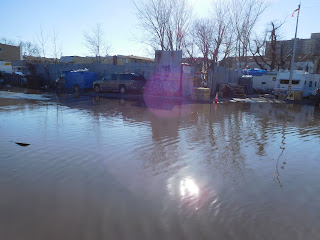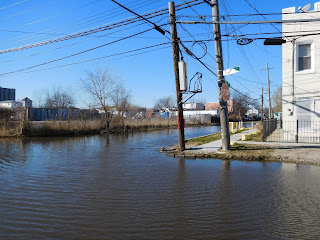When people think of "cycling nations", one of the first that comes to mind is the Netherlands.
Indeed, in a country of 16 million inhabitants, there are 18 million bikes. More important, though, are Dutch attitudes about cycling. Someone who rides to work or for pleasure is not seen as an outlier or renegade: Even Prime Minister Mark Rutte rides to work. Hmm...What kind of a country would the US be if our President rode to his office every day?
Oh, but it gets even better. You see, although the Dutch royal family--like its counterparts in the UK, Denmark and other European countries--has little actual power, it is still seen as a "face" of the nation. Their day-to-day activities help to form the image their subjects have of their nation, and the image that nation projects to the world.
So it's no surprise that King Willem-Alexander, who has occupied the throne for nearly four years, cycles--as a Cycling NL video notes, "not only for the annual so-called photo opportunities, but also in private." He is regularly accompanied by his Argentinian wife--Queen Maxima Zorreguieta-- and their daughters.
It's also not surprising that he inherited his love of cycling from his family. His mother, Queen Beatrix, did not cycle much while she was queen, but did enough riding before that to warrant a statue of her astride a bike in the Dutch capital.
Her mother, Queen Juliana--one of the best-loved monarchs in Dutch history--was an avid cyclist throughout her life. Here we see her during a visit to the Frisian Islands in 1967:
It's widely reported that her entourage didn't ride behind her merely for appearances or out of courtesy: the Queen actually could, and did, out-ride all of those men!
Indeed, in a country of 16 million inhabitants, there are 18 million bikes. More important, though, are Dutch attitudes about cycling. Someone who rides to work or for pleasure is not seen as an outlier or renegade: Even Prime Minister Mark Rutte rides to work. Hmm...What kind of a country would the US be if our President rode to his office every day?
Oh, but it gets even better. You see, although the Dutch royal family--like its counterparts in the UK, Denmark and other European countries--has little actual power, it is still seen as a "face" of the nation. Their day-to-day activities help to form the image their subjects have of their nation, and the image that nation projects to the world.
So it's no surprise that King Willem-Alexander, who has occupied the throne for nearly four years, cycles--as a Cycling NL video notes, "not only for the annual so-called photo opportunities, but also in private." He is regularly accompanied by his Argentinian wife--Queen Maxima Zorreguieta-- and their daughters.
It's also not surprising that he inherited his love of cycling from his family. His mother, Queen Beatrix, did not cycle much while she was queen, but did enough riding before that to warrant a statue of her astride a bike in the Dutch capital.
Her mother, Queen Juliana--one of the best-loved monarchs in Dutch history--was an avid cyclist throughout her life. Here we see her during a visit to the Frisian Islands in 1967:
It's widely reported that her entourage didn't ride behind her merely for appearances or out of courtesy: the Queen actually could, and did, out-ride all of those men!


















































